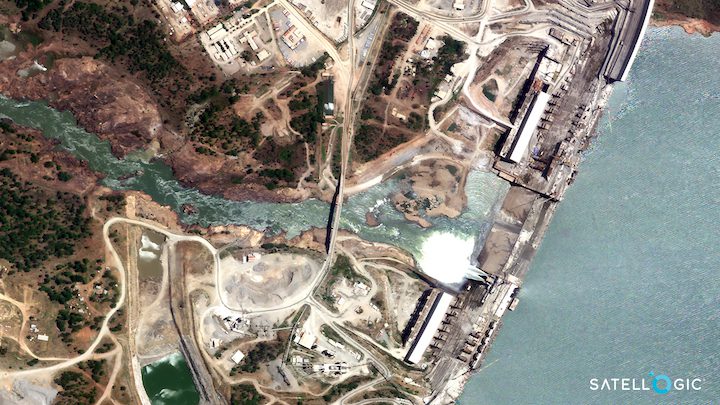AWS, Satellogic Space-Cloud Collaboration Yields Reduction in Data Processing Time

Imagery of the Grand Ethiopian Renaissance Dam. Photo: Satellogic
Satellogic and Amazon Web Services (AWS) have detailed how AWS cloud infrastructure supports Satellogic, in a case study on how the cloud and space work together. Clint Crosier, director of the AWS Aerospace and Satellite Solutions division, told Via Satellite that through helping Satellogic scale, AWS learned how to reduce processing time for the company’s satellite imagery by 20% to 30%.
Satellogic collects high-resolution Earth Observation (EO) data from its 17 commercial satellites in orbit. The company says this constellation can capture more than 5 million square kilometers of multispectral and hyperspectral imagery per day, equivalent to more than the surface area of Russia. In addition, each Satellogic satellite can capture full-motion videos up to 60 seconds in length.
In a blog post published Wednesday, AWS said Satellogic uses Amazon Simple Storage Service (Amazon S3) to store the vast quantity of data captured and manage costs.
Processing that quantity of data is a challenge as well. Satellogic processes the high quantity of imagery with AWS compute services such as Amazon Elastic Kubernetes Services (Amazon EKS) and AWS Lambda. The companies said Amazon EKS reduces data processing times by an average of 20% to 30%. Then, customers access the processed data through a serving layer built on top of Amazon CloudFront and Amazon API Gateway. Satellogic has a plan to expand its constellation to 300-plus satellites in order to image every square kilometer the globe daily, and will rely on AWS to scale up to this size.
Crosier said AWS actually learned from Satellogic when tackling the challenge of how to help the company scale up the amount of data they are collecting, processing, and analyzing.
“We learned how to scale that problem and increase their ability to process data, while decreasing the time it took to processes,” Crosier told Via Satellite. This was done through high performance compute capabilities and optimization capabilities.
Satellogic has been a customer of AWS since before AWS established the Aerospace and Satellite Solutions division, but hiring space experts at AWS allowed the company to serve Satellogic better, Crosier said.
“The AWS system elastically and automatically sizes how many servers they need, and sizes it up and down based on the specific workloads they are putting on the system,” Crosier said. “We built a process where they start with 17 and grow to 300, and it’s almost invisible because it’s all configured automatically behind the scenes on the AWS platform.”
Matt Tirman, president of Satellogic North America, commented in the blog that this collaboration between Satellogic and AWS will help Satellogic as it scales serve customers across multiple industries, develop advanced applications, and improve emergency response.
“By using AWS to store, process, and deliver data captured by its constellation of satellites, Satellogic enables customers to access daily global coverage of the Earth’s surface, a critical source of information for use cases such as emergency response, food security, global logistics, remote asset monitoring, among many others,” Tirman said.